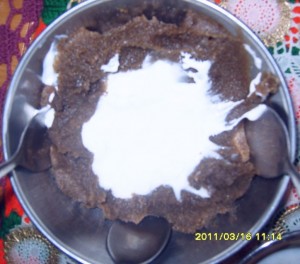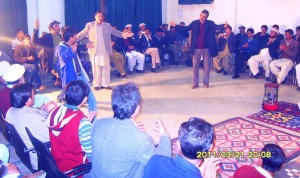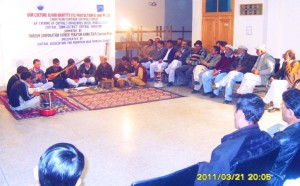
Tourism Corporation Khyber Pukhtunkhwa (TCKP) sponsored a festival of indigenous cuisines and an evening musical show, organized by Chitral Association for Mountain Area Tourism (CAMAT) on March 21, 2011, in Chitral town.
The slogan of the day was ‘our culture is our identity; its protection is our need’. The objective was to protect and promote the traditional food of Chitral as well as to promote the tourism industry for the economic empowerment and welfare of women, who are normally involved in cooking in the entire region.
The young generation has almost forgotten the names and tastes of their cultural cuisines, which means this information could disappear very soon without adding economic incentives linking it to the tourism industry. This was another overarching objective of the event.
The food festival was implemented in collaboration with girl guides, a voluntary organization of young school students in Dolomoch, Chitral town. The event was planned, monitored and supervised by community representatives and judges.

The cuisines showcased shoshp, chhira shapik, ghara, shoshpalaki, chamborogh, sanabachi, mol and lazhek, which were cooked at household level. They were highly appreciated and evaluated by judges.
While traditional hospitality and local cuisines of Chitral could be vital to tourism development, much work needs to be done to improve hospitality and preparation of the cuisines without compromising their originality. This will be possible through formal cooking training and hospitality courses.
Meanwhile, the evening musical event was also organized in Chitral town to be participated by a wide spectrum of community members from different valleys, in addition to folksingers, folk dancers and instrumentalists.
 Some forgotten folk dances i.e. anaphari, tatali wawali, chong rigishi and barwazi were performed by expert folk dancers. The musical event mostly focused on the participation of young talented artists hailing from rural backgrounds, which made the programme culturally more colorful and vibrant. Occasions such as this help give exposure to the young artists, grooming them for tourism.
Some forgotten folk dances i.e. anaphari, tatali wawali, chong rigishi and barwazi were performed by expert folk dancers. The musical event mostly focused on the participation of young talented artists hailing from rural backgrounds, which made the programme culturally more colorful and vibrant. Occasions such as this help give exposure to the young artists, grooming them for tourism.
The music of pasture flutists also featured in the musical show. The instrument is played by shepherd as they tend cattle in the summer pastures. Its plaintive notes echo in the rocks and has a melancholic resonance that enthrall the listeners.
